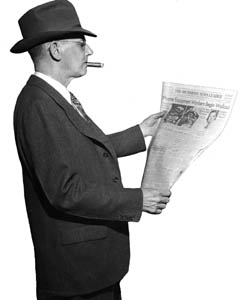Today marks The Hip Flask’s first birthday. In recognition of this special occasion – and to commemorate my past year of blogging – I’d like to take a short look back at a couple particularly special pieces I’ve written over the past twelve months.
By far my post popular post was the first post in a three part series titled “Just Like Old Times?” I was especially proud of this post not only for its subject, but also because it was selected to be “Freshly Pressed” and linked from wordpress.com, which was no doubt responsible for the astronomical number of views and comments.
Most importantly, I must thank you, dear readers, for your continued thoughts, comments, e-mails, and encouragement. To that end, if there’s a particular subject, topic, or beverage you’d like to see more of in this space in the year to come, let me know in the comments below.
And finally, I’d like to take this opportunity to return to my original roots and re-post the first words I wrote on this blog. I have strived to abide by the parameters I originally set for myself; hopefully I’ve kept to my word.
Now, as it originally appeared on July 29, 2010, my first post, “First Things First.”
First Things First
This is a blog about drinking. That point should be fairly obvious. But why another blog about drinking? Does the universe need another talking head spouting off about how cool you feel drinking $4 PBR cans at the newest dive bar or how swanky that one martini lounge is?
No, absolutely not.
So I’ll attempt to distinguish – this blog is a manifestation of two things, my love of drink and my meager attempt at expressing that love. Really, it’s simply a journal of my thoughts on an activity I enjoy. It is completely unnecessary. Yet its lack of necessity is one of its central tenets. Much of life is not necessary and is undertaken simply out of pleasure. And when undertaken, life becomes more pleasurable.
That is my goal – to express my joy in the simplicity of a beverage. And learn a few things along the way.
In some way, that might differentiate my opinions or thoughts from all those others. Maybe not. Maybe you’ll learn something new – an author, a recipe, a consideration, something to make you a little more knowledgeable or thoughtful about this hobby of drinking. A wonderful hobby shared by us. And others. Many others.
We drinkers are an easygoing bunch. Drinking should be an activity that winds one down. I’ll keep the blog easygoing too. But this should be worth your time and mine, so I might attempt an insight from time to time. But I’ll keep a few common themes throughout.
1. Fun. Drinking, like boating, stamp collecting, or baseball, should be enjoyable. So enjoy your drink. Sit down. Slow down. I don’t believe you should need to fight to get your drink or shout to speak with friends. But however you choose to drink, it is your choice. So it should be fun. Don’t let anyone else tell you otherwise.
2. Simple. Drinking should be easy. If a drink needs more than two or three ingredients, it probably is not worth drinking, let alone making. My tastes are conservatively mainstream and not too obscure, although finding something rare or new is always nice. I’ll do my best to convey all possible information so location and replication is simple as well.
3. Thoughtful. I view this blog as an exercise in putting my thoughts and experiences of a favored subject into words. There are many other commentators. When my words are insufficient I’ll link to those more savvy than I. Or perhaps I’ll suggest an article or book for consideration. Because the only thing more fun than drinking is reading about drinking while drinking.
The possibilities are endless. Hopefully, I’ll learn a new trick or two, as will you. Because there’s always a new drink to try. Or an old drink to try again. So, sit down some place comfortable. Loosen your tie. Take a sip. Take another. And read on.








